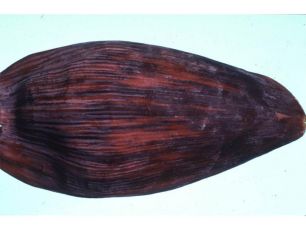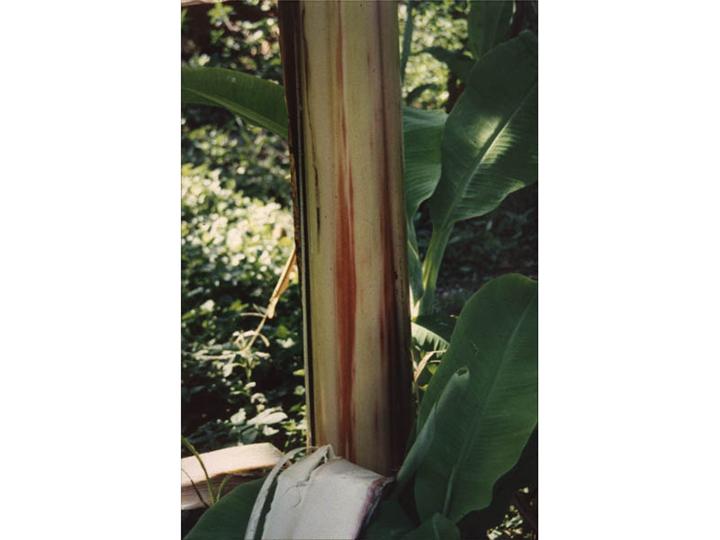
Banana bract mosaic virus
| Primefact number | Edition | Published | Author |
|---|---|---|---|
| 1325 | Second | Jul 2018 | Plant Biosecurity and Product Integrity |


Banana bract mosaic virus (BBrMV) is an exotic plant pest. Banana bract mosaic virus is also called banana bract mosaic and Kokkan disease. This disease was first found in the Philippines in 1979.
Banana bract mosaic virus spreads quickly and causes significant economic losses. The main symptoms of banana bract mosaic virus is the dark, red-brown mosaic pattern found on the banana flower bract (Figure 1).
The flower bract is a modified leaf that covers the rows of flowers and young fruit on the banana plant's flower stalk.
Notifiable status
Banana bract mosaic virus is a notifiable plant disease in NSW. Banana bract mosaic virus is a serious threat to Australia's banana industry.
All notifiable plant pest and diseases must be reported within 1 working day. You can report notifiable plant pests and diseases by one of the following methods.
- Call the Exotic Plant Pest Hotline 1800 084 881
- Email biosecurity@dpi.nsw.gov.au with a clear photo and your contact details
- Complete an online form
A full list of notifiable plant pests and diseases can be found in Schedule 2 of the NSW Biosecurity Act 2015.
Damage
Banana bract mosaic virus damages banana plants and bunch weights can be reduced by up to 40% due to malformed bunches and underdeveloped fingers.
Description
Initial symptoms of banana bract mosaic virus include green or red-brown streaks or spindle-shaped lesions on the leaf stalks and sometimes on the midribs of the new banana leaves.
Chlorotic (pale yellow or yellow-white) streaks may also appear on the bunch stems and fingers. In severe cases the affected fruit can be rejected.
If the outer leaves are removed from the banana plant stem; red-brown, spindle-shaped streaks can be seen on the exposed stem (Figure 2).
Lifecycle
Banana bract mosaic virus infects the vegetative, flowering and fruiting stages of banana plants.
The disease is transmitted by aphids which acquire the virus while feeding on infected plants. The virus only lives inside the aphids for a short period of time and is transmitted in a non-persistent manner.
Banana bract mosaic virus can be spread by four aphids that are present in Australia:
- banana aphid (Pentalonia nigronervosa)
- corn aphid (Rhopaloshiphum maidis)
- cotton or melon aphid (Aphis gossypii)
- cowpea aphid (Aphis craccivora).
Double infections of banana bract mosaic virus and banana bunchy top virus (also transmitted by the banana aphid) can occur in banana plants.
Hosts
Banana bract mosaic virus infects cultivated and wild bananas (Musaceae plant family).
Spread
Banana bract mosaic virus is spread longer distances by infected banana planting material, including suckers, bits, corms and unindexed tissue culture plantlets.
Distribution
Banana bract mosaic virus is found in India, the Philippines, Sri Lanka, Thailand, Vietnam and Western Samoa.
Actions to minimise risks
Put in place biosecurity best practice actions to prevent entry, establishment and spread of pests and diseases:
- practise “Come clean, Go clean”
- ensure all staff and visitors are instructed in and adhere to your business management hygiene requirements
- source propagation material of a known high health status from reputable suppliers
- monitor your crop regularly
- keep records
- isolate banana plants or areas with suspect symptoms to prevent further spread

